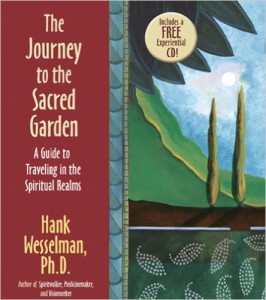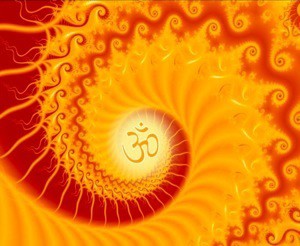“In order to acquire continuity of consciousness, unaffected by lapses into unconscious states, you must hold yourself at the junction of all the states, which constitutes the links between sleeping, dreaming and waking: this is turiya, the fourth state.”
Adapted from the Spanda Karikas of Vasagupta a tenth century Tantric text.
Robert Moss uses this quote at the beginning of one of our Quantum Dreaming sessions as it describes the essence of the dream practice. Spanda is a Sanskrit word denoting ” active, throbbing, pulsating with life” and refers to the dynamic tension between Shiva and Shakti, or between Purusha and Prakriti, the Seer and the Seen, to use  Patanjali’s terminology. Another word for the immediate and personal experience of spanda is kundalini. The Spanda Karikas, along with the Shiva Sutras, are key texts in the Kashmir Shaivism tradition, and it was delightful to see this being integrated in to the Quantum Dream teaching. It’s all yoga!
Patanjali’s terminology. Another word for the immediate and personal experience of spanda is kundalini. The Spanda Karikas, along with the Shiva Sutras, are key texts in the Kashmir Shaivism tradition, and it was delightful to see this being integrated in to the Quantum Dream teaching. It’s all yoga!
This fourth state, pure awareness without attributes, is the core or foundation of the other three states. The Yoga Sutras, in I-3, describe this as ‘drashtuh svarupe’ the the true nature of the Seer, and we experience this as the infinite ever-present dynamic stillness awakened in practice. In savasana, we begin the journey, in stillness, from waking to dream, but pause in between, in the twilight zone, where we are no longer awake, but have not dropped into sleep. Here imagination, or vikalpa, one of the five vrttis mentioned by Patanjali in I-6 and I-9, is activated.
Imagination can be seen as a creative mental process that is fed by streams of energy and information. If the only streams feeding imagination are our superficial thinking and disturbed emotions, our imagination can be self destructive. However, if our imagination  can tap into a deeper stream of our own souls yearning and creative impulses, whole new worlds can open, full of healing and growth. If we go further and let our imagination tap into the stream of the creativity of the whole universe, then we become active participants in the cosmic creation process. These imaginal realms are explored in active dreaming.
can tap into a deeper stream of our own souls yearning and creative impulses, whole new worlds can open, full of healing and growth. If we go further and let our imagination tap into the stream of the creativity of the whole universe, then we become active participants in the cosmic creation process. These imaginal realms are explored in active dreaming.
An asana practice based on sensitivity and deepening perception is the foundation for the creative imagination. Being able to drop into the energy flows and fields of our body, of organs and cells and fluids, and swim around in there is great preparation for active dreaming. In active dreaming, we consciously enter the ‘savasana twilight zone’ and journey to imaginal realms to study, heal, explore and discover new levels of awareness and consciousness. We use archetypal structures as starting points for these journeys that offer an infinite number of possibilities for our own unique experiences. In the previous blog, two active dream structures were presented for your explorations. Here is another I learned from Hank Wesselman, my shamanic guide and it is well presented in his book seen below.
The Sacred Garden
 The Sacred Garden can be a home base for our explorations in non-local consciousness. It is a place of “for personal empowerment, as well as physical, psychological, emotional, and spiritual restoration.” It is also a jumping off point for further journeys. According to Hank, the garden operates under four primary rules. 1. Everything in the garden symbolizes some aspect of our lives or experience. 2. Everything in the garden can be communicated with. You can ask questions and receive answers, although the language may be a bit different from our normal daily experience. 3. You can change your garden; add structures, plants, invite visitors and full time inhabitants; or remove the same. 4. As you garden changes, some aspect of your life will change.
The Sacred Garden can be a home base for our explorations in non-local consciousness. It is a place of “for personal empowerment, as well as physical, psychological, emotional, and spiritual restoration.” It is also a jumping off point for further journeys. According to Hank, the garden operates under four primary rules. 1. Everything in the garden symbolizes some aspect of our lives or experience. 2. Everything in the garden can be communicated with. You can ask questions and receive answers, although the language may be a bit different from our normal daily experience. 3. You can change your garden; add structures, plants, invite visitors and full time inhabitants; or remove the same. 4. As you garden changes, some aspect of your life will change.
Sitting or lying in a comfortable position, dropping into ‘savasana’ consciousness, imagine a place where you know you are totally safe and nurtured. It may be from your child hood, or any part of your life, and we are calling it a garden, but it is a place where you can go and take refuge. Begin to notice the sensory details: how it smells, the sounds, the lighting, the structures. It can be small or large. It is your imaginary creation, but you want to begin to stabilize the basics so you can return here again and again. It may become quite elaborate over time. (Hank told us his sacred garden has a house with a house keeper and he will go there at death for the bardo phase as he decides what to do next.) Feel free to move things around. I have towers, fountains and underground rivers in mine. Lots of water! Find a place in the garden that is the most powerful, where you can go to recharge and also begin other journeys. It may be at the foot of a tree, or inside a cave, or in the middle of a flower bed. Trust your inner psychic instincts and imagination to help you out here. Upon your return to waking consciousness, take notes to help anchor your experience. Return to it daily for practice.
Part 2: Asana Practice
Continue to release the spinal column in bridge, supported and unsupported, and begin to inhabit the interior of the spine. Find the spinal canal and the spinal discs, including the annular ring and the nucleus. Feel the spaces where the nerves emerge as the spine decompresses. Use breathing to help. Carry this into sitting, standing, and postures, and your daily life. Feel the physical body becoming more ethereal, even if old injuries and traumas stand out as anything but ethereal. Approach these traumatized areas from spaciousness, support and flow and find how and where more integration can arise. Enjoy your practice in whatever form it may take.
As I am being challenged by my right hip joint these days, my journeys involve the bone fields of the femur head and acetabulum. My DFL is broken and the femur has lost an integral connection with my core. Thus my contraction and tension between the trochanters. I have found that creating a circular flow around the rim of the acetablum helps trace the three bones: illium, ischium and pubis and help align them to each other energetically. Also, once inside my sacrum, I can adjust the illium and widen the pelvic space with a fish body action. This is helping the psoas and iilicus muscles to reconnect diaphragm to feet.
There is also a spiral through each of the pelvic bones centered on the acetabulum. If you can visualize the pelvic bone beginning as a single plane, the illium rotates up and externally, while the ischium (sitting bone) rotates down ward and internally, twisting the whole bone in opposite directions. This spiral is blocked on my right side, but slowly opening back up. Working at this level, especially with an injury or trauma, is a slow process, but a gold mine for learning about energy flow, fields, and simple walking. Jump in there and play.


